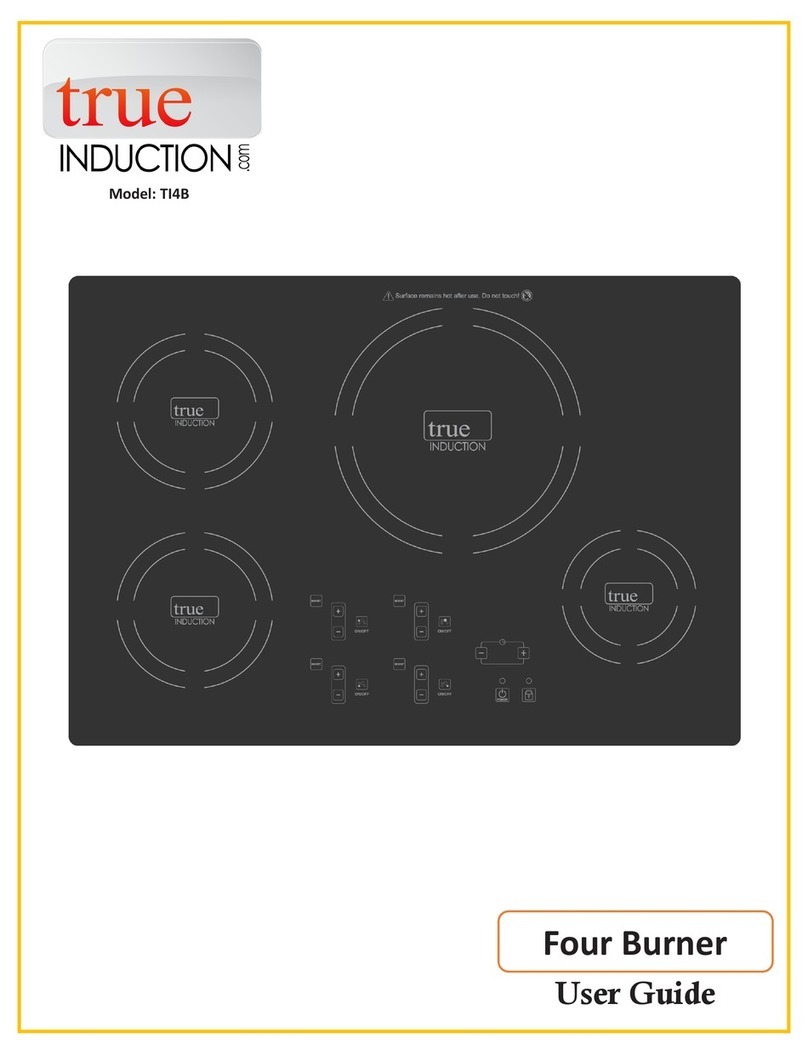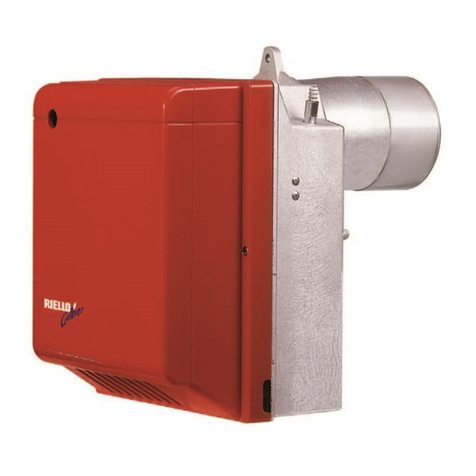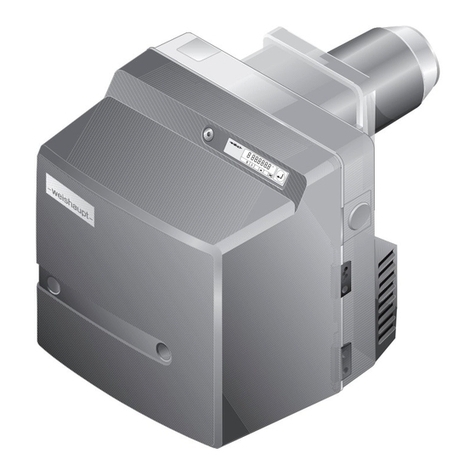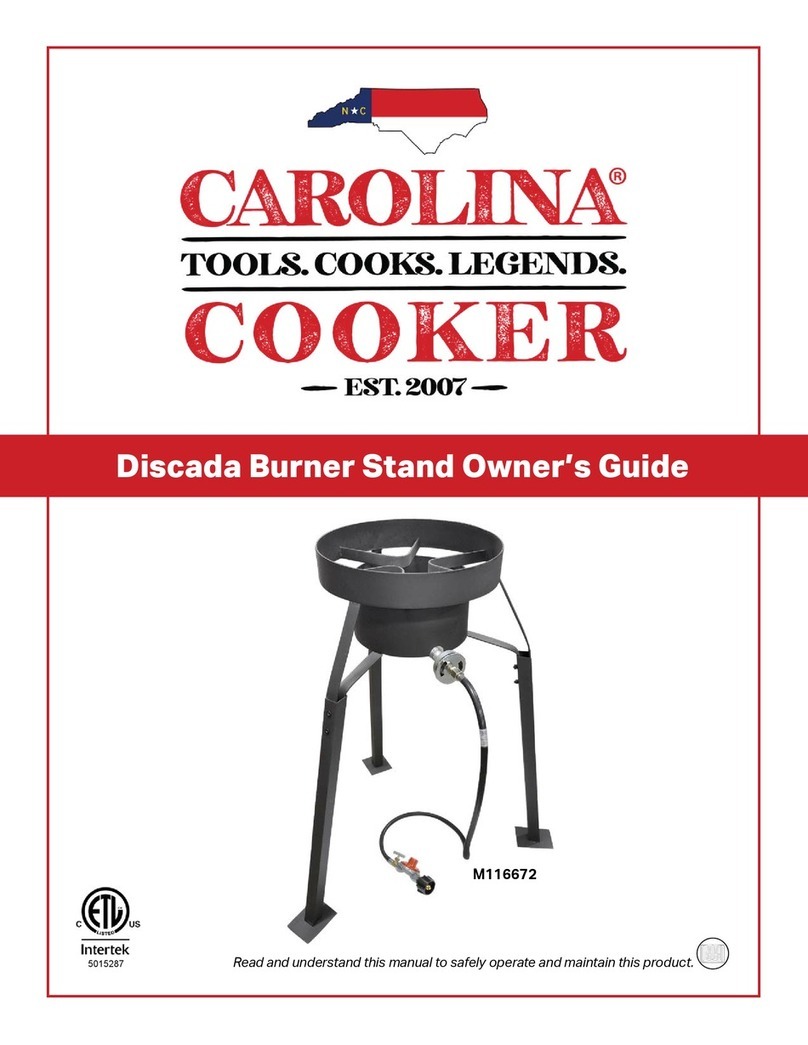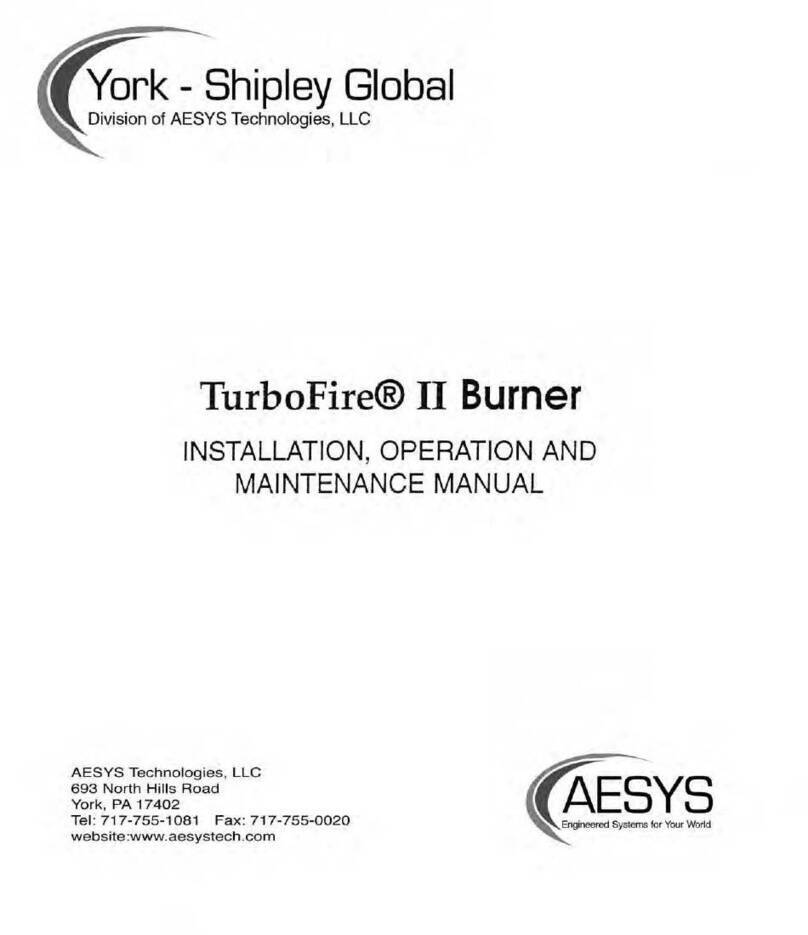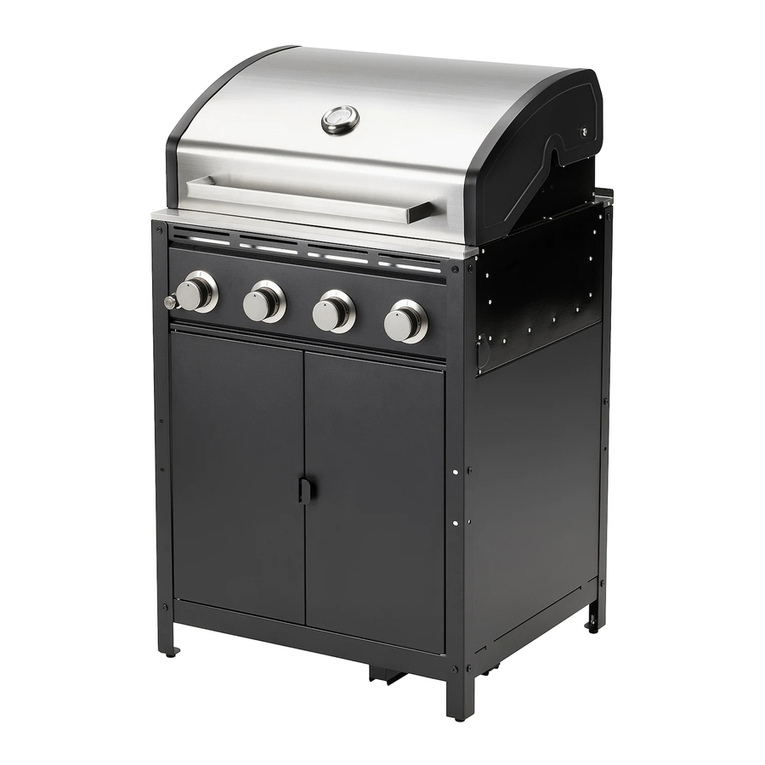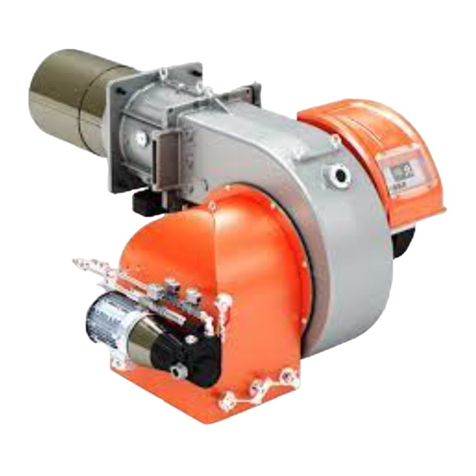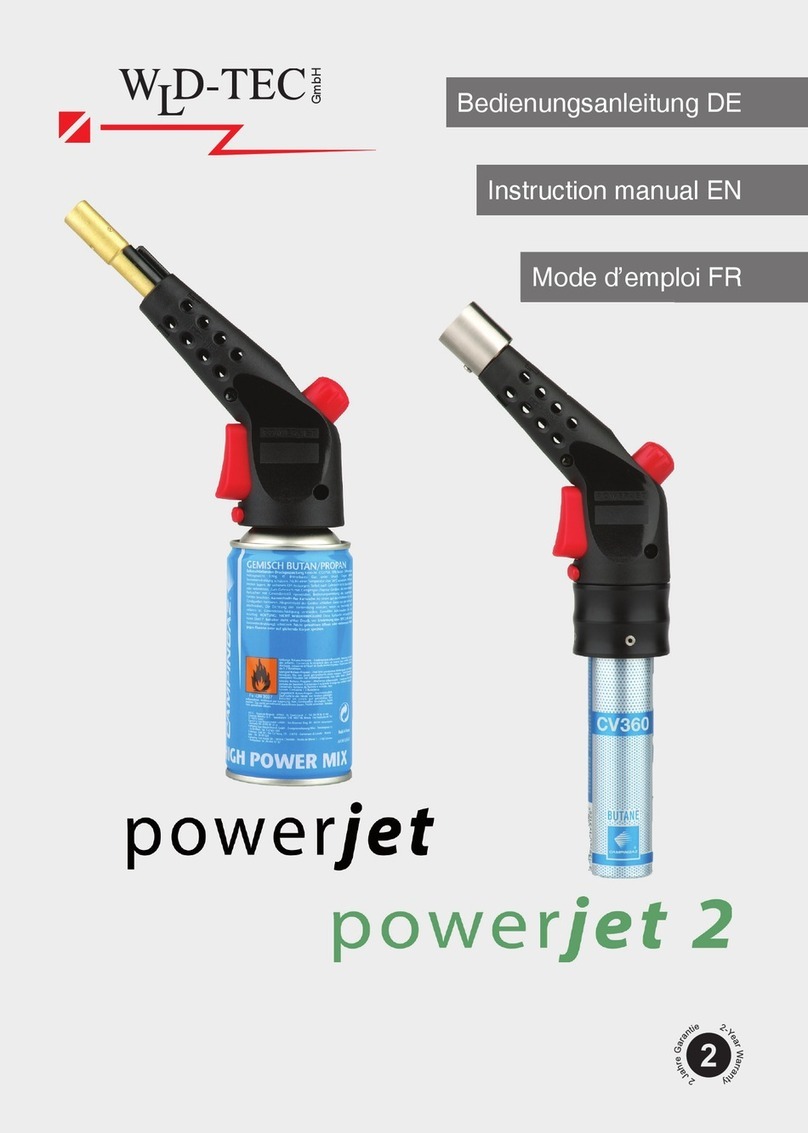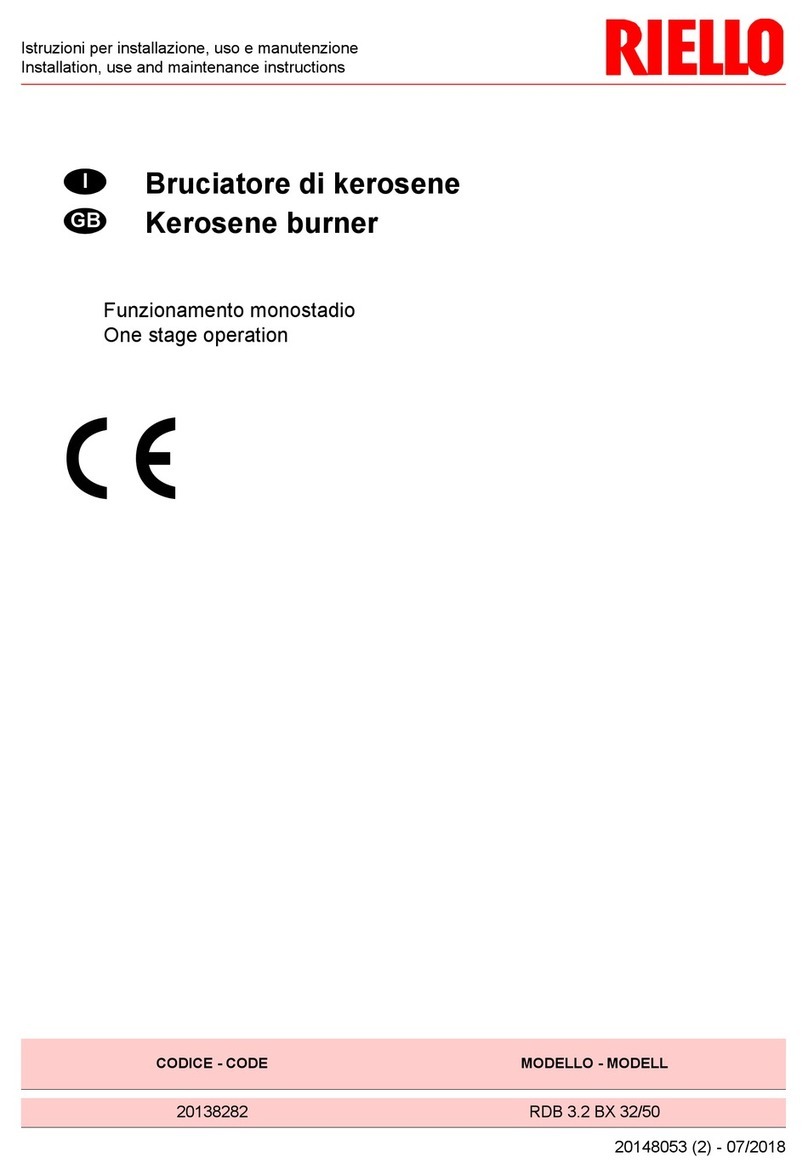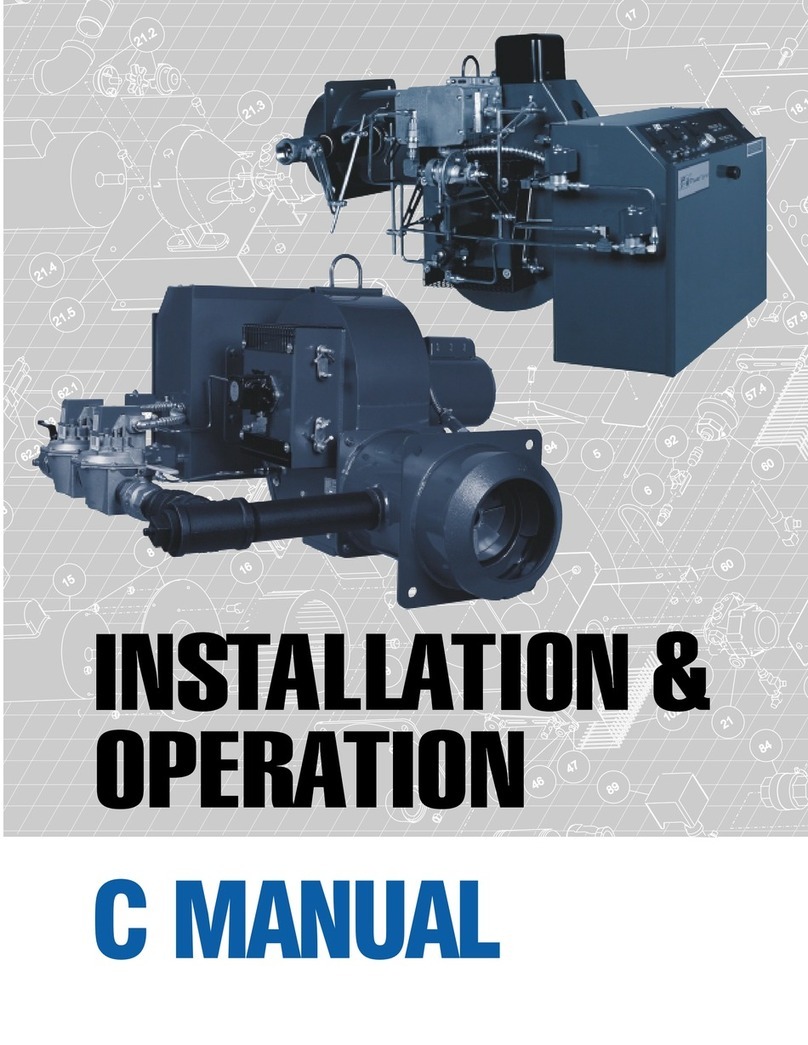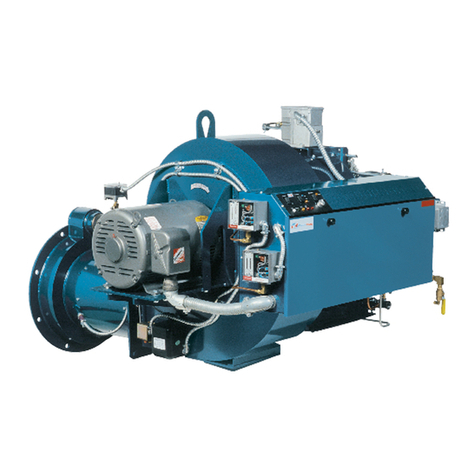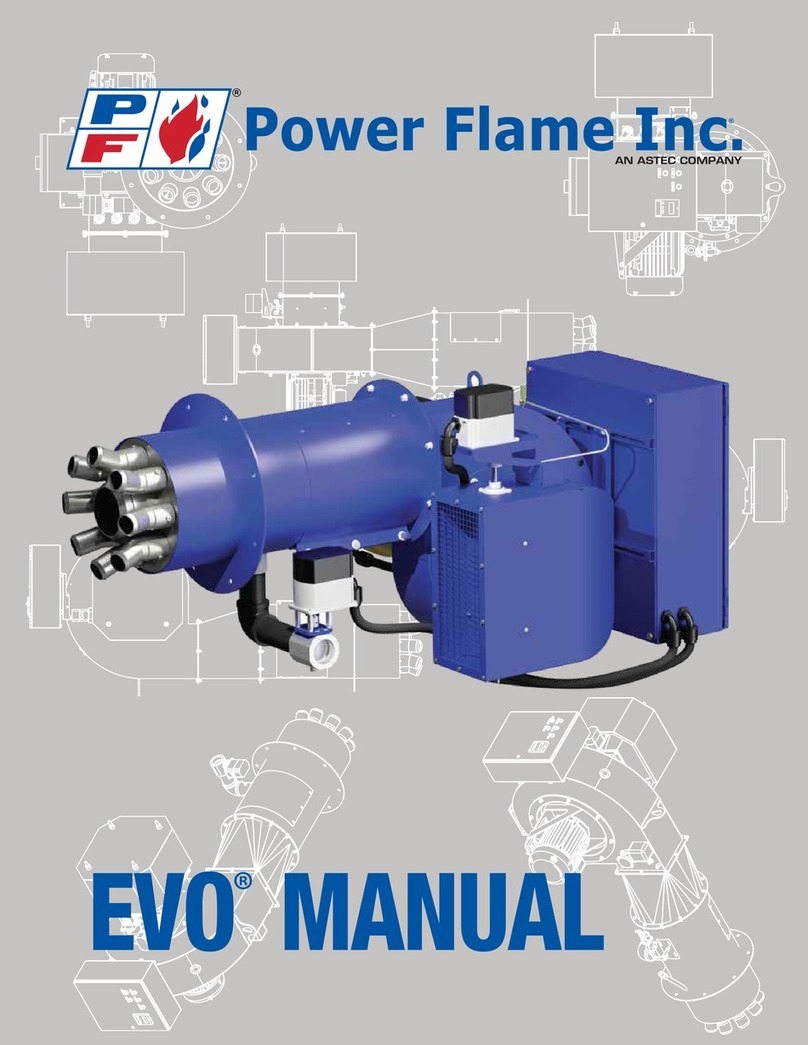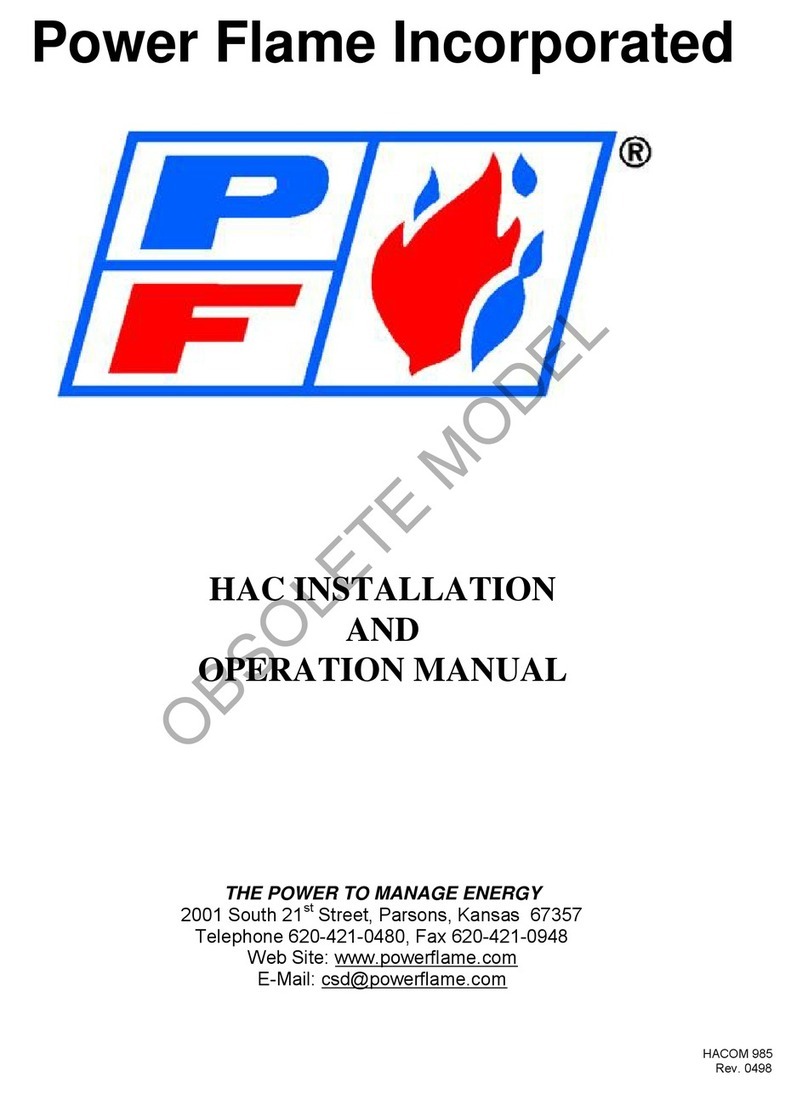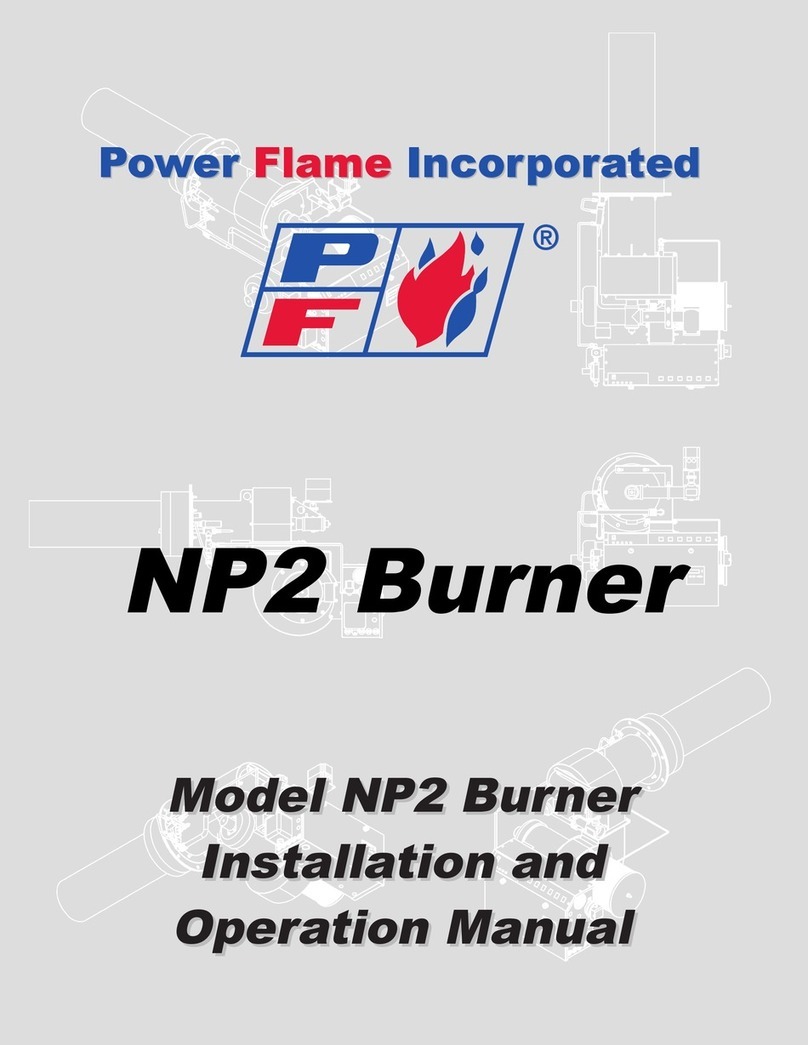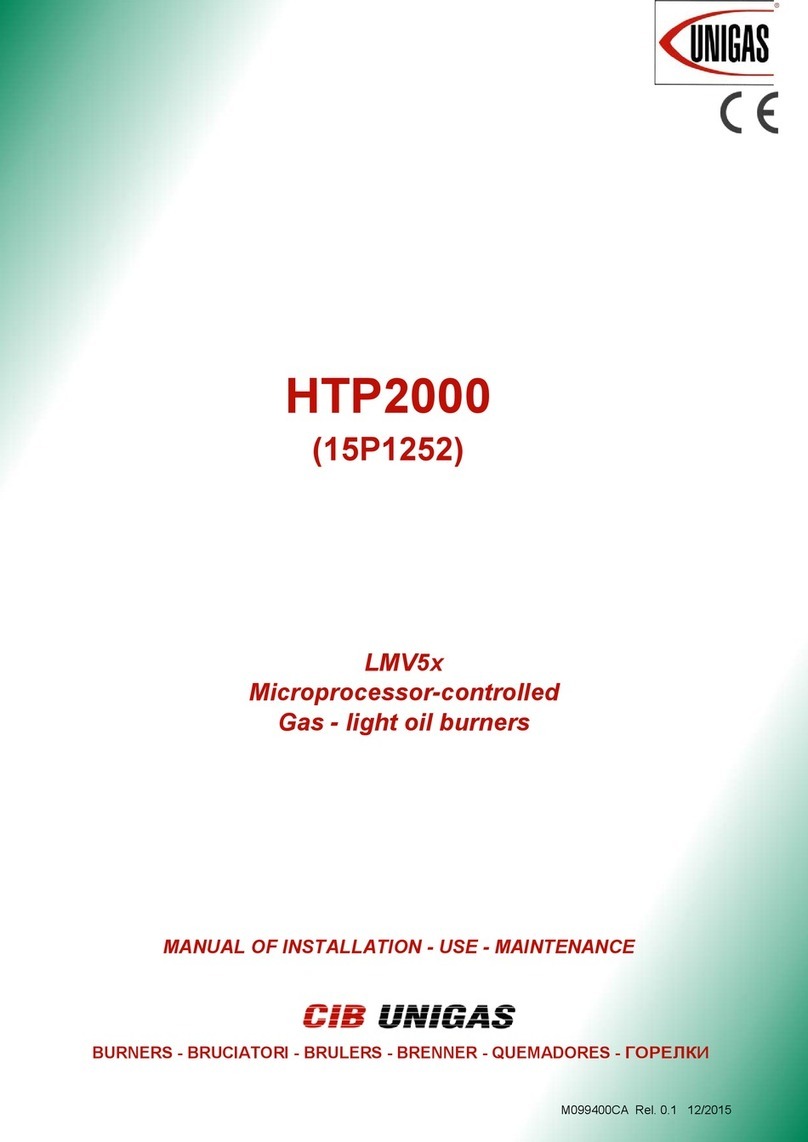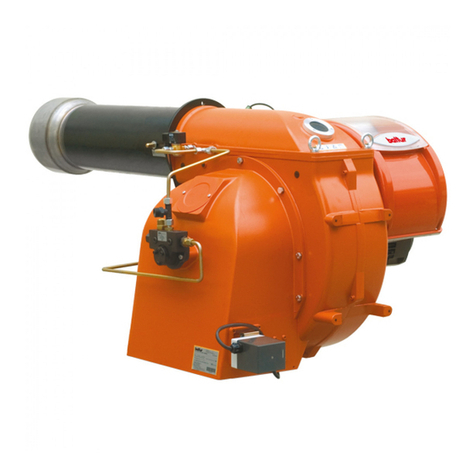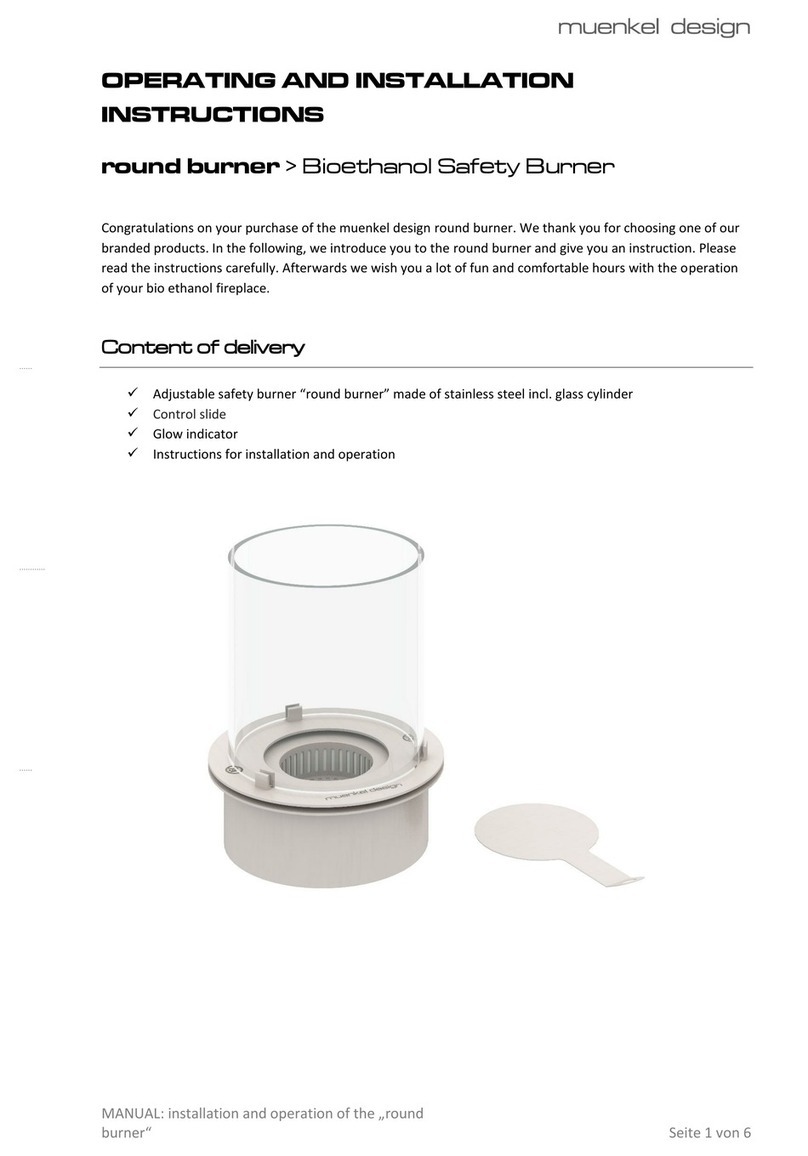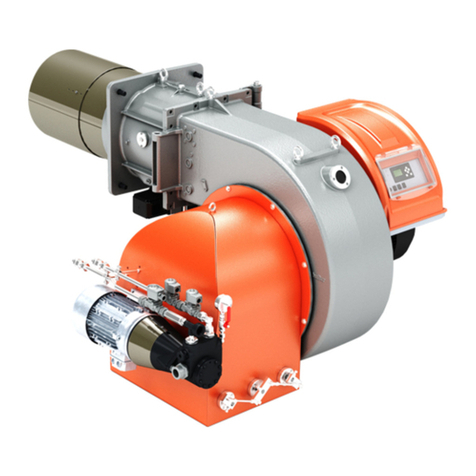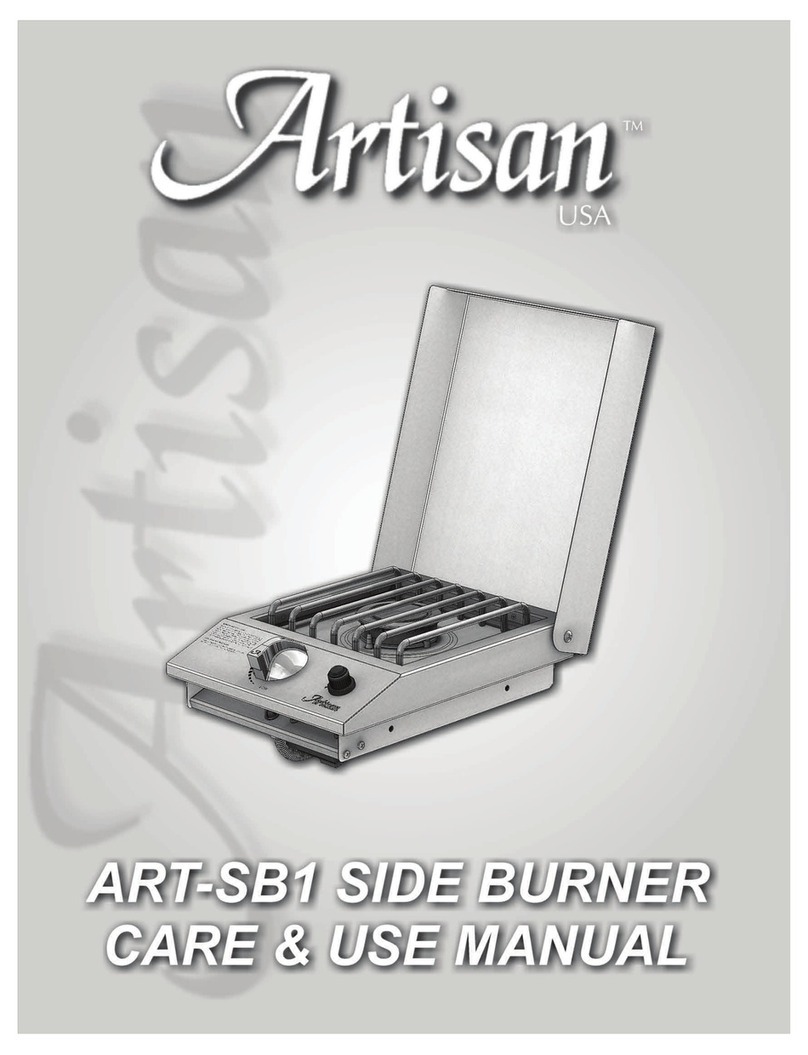
Information on Fuel/Air Modes of Operation for Combination Gas/Oil Units (also see Section 3, page 15)
General Information
Specific adjustments and mechanical operation of the
various modes of fuel/air control for straight gas and
straight oil burners are included in this manual. This
information should be used to properly adjust each fuel
for combination gas/oil units. The following information
is offered as additional guidance.
Gas On/Off System Combined with Oil On/Off System
The air dampers are adjusted and locked in place for the
most efficient operation for both fuels. Refer to the
mechanical operation of the Gas On/Off and Oil On/Off
systems for adjustment details (pages 15, 16 and 17).
4. GENERAL START UP PROCEDURES-ALL FUELS
All Fuels - General Start Up
A thoroughly qualified burner technician should be
employed to provide the initial burner start up, as well as
any subsequent servicing.
A representative of the owner and/or the person or persons
responsible for operating and maintaining the unit
should be present during the initial start up. A service
representative may also be required by the local utility
on gas fired equipment. Instructions regarding the
proper care and maintenance of the unit should be
outlined with these people present.
Before beginning start up, the start up technician should
thoroughly study and become completely familiar with
the exact sequence of operation and all other details of
the specific flame safeguard control system being used.
This information will be found in bulletins printed and
supplied by Honeywell or Fireye. A copy of this bulletin
was supplied with the burner.
After the burner is mounted and all wiring and piping has
been completed, tested and determined to be correct,
the following procedures are recommended:
For combination gas/oil units; the gas side operation
should be set up first to clock the gas meter, allowing
precise gas inputs to be determined. Once the gas ope-
ration is complete, the oil side can be set up easily by
correlating the CO2values of the two fuels. See page
41, Table 13, CO2-O2Ratio Curves for Fuel Oils and
Gases.
If it is anticipated that the Gas/Oil burner will rarely run on
oil; it is recommended that the blower motor driven oil
pump drive coupling be removed - and replaced only
when required for oil firing. If, however, the pump coupling
is left connected to the blower motor, it is essential to
ensure that the pump has a good oil supply, when the
burner is operating on the gas cycle, so that it will not
run dry. Be certain on initial start up that the pump is
adequately primed to prevent against mechanical seizure
caused by lack of oil. The pump warranty will be voided
if the pump is run without adequate oil supply.
1. Make a general inspection tour of the equipment room
to ensure that the installation is complete. Check piping,
controls, and wiring. When using the Alpha System™
Circuit Board, check wiring connections before power-
ing the unit. See page 7 & 8 for connection diagram.
NOTE: L1 Main 115 volt hot incoming power terminal
is located on the lower set of terminals at the bottom
of the main circuit board. The L1 Fused terminal
located on the lower set of terminals is for factory
use only and should not be used for incoming power
connections.
2. Close main and checking gas cocks. Open suction
line manual oil valves and others as appropriate.
3. Tighten all screws on terminal blocks in control cabinet
in case some may have loosened in shipment.
4. Do not secure flame safeguard control into its wiring base
until it has been determined that there are no shorts or
grounds in the system.
5. Check fuses in main panel and in burner control cabinet.
Check wiring to the burner control cabinet for compliance
with the wiring diagram and local codes. Determine that
voltage supply is correct to motor starter line connections
and to control circuit line connections. If a control circuit
transformer is supplied, make certain its primary voltage
matches the line voltage being supplied. (A 230 volt
transformer does not produce proper control voltage when
supplied with 208 volts.)
6. Check breaching and stack to ensure that they are open
and unobstructed.
7. Check blower (and oil pump motor, as applicable) rotation
by momentarily making contact of the motor starters. Proper
rotation is imprinted on the fan housing and (if supplied)
the remote oil pump set assembly.
8. Check operating controls, limit controls, low water cut-off,
flame safeguard control reset, high and low gas pressure
switches (if used) and low fire interlock switch (if used) and
all other applicable interlocks. All contacts should be closed
(an exception will be found on jobs using the low gas
pressure switch; this switch should be open until the main
gas cock is opened). If a low oil pressure switch is used,
its contacts will remain open until the oil pump is running
and the low oil pressure cut-in point is reached.
9. Do not repeatedly recycle the burner, so as to allow any
unburned fuel in the combustion chamber.
10. Specific instructions relative to component sequencing
are provided in the flame safeguard manufacturer’s bulletin
which is included with the documentation shipped with the
burner. Refer to Honeywell and Fireye literature regarding
the clipping of jumpers or setting of DIP switches in
connection with the pilot establishing period, flame failure
action, and air flow switch failure features.
11. Proper test equipment must be used in order to achieve
maximum system operational reliability and fuel efficien-
cies. See page 24 for equipment lists.
12. All fuel/air adjustments should be made to achieve required
input rate, satisfactory combustion test values, flame
stability and appearance.
13. Every new burner start up should employ the use of the
Burner Start Up Information and Test Data sheets on
pages 46 and 47.
Gas On/Off System with Oil On/Off Fixed Air Low Fire Start
System
The air dampers are adjusted and locked in place for the
most efficient high fire operation for both fuels. Smooth light
off on gas is achieved by the use of a slow opening diaphragm
or motorized gas valve, which, once energized, allows gas
flow to steadily increase from the initial light off volume up
to the high fire volume. Smooth light off on oil is achieved by
the use of a solenoid oil valve bypass system which allows
a reduced amount of oil to be burned at light off and then
switching to the high fire rate once the low fire has been
established. Refer to the mechanical operation of the Gas
On/Off system and the Oil Fixed Air Low Fire Start system
C23
Rev.304


